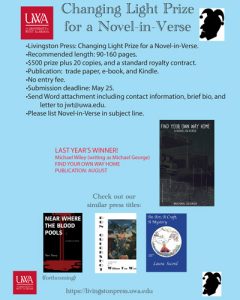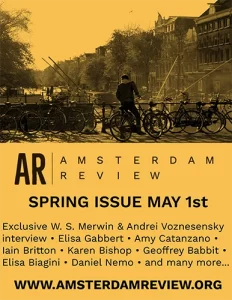Descant – 2010
Volume 40 Number 3
Fall 2010
Quarterly
Tanya Angell Allen
In “The Last Jesus I Know Of – ” a nonfiction piece from Descant’s “Writers in Prison” issue – Stephen Reid writes “amongst living books, the shape of your world can shift a thousand times, one for each title, or be changed forever in a single page. In its own way, the prison library is more dangerous than the big yard.”
In “The Last Jesus I Know Of – ” a nonfiction piece from Descant’s “Writers in Prison” issue – Stephen Reid writes “amongst living books, the shape of your world can shift a thousand times, one for each title, or be changed forever in a single page. In its own way, the prison library is more dangerous than the big yard.”
This issue of Descant also has the power to change the shape of reader’s worlds by shifting the way they think about prisons. Billed as the first of Descant’s fortieth anniversary celebration volumes, this 150th issue was inspired when an editorial assistant noticed a large number of submissions coming from prisoners in Canada and the United States and suggested a themed issue.
It’s hard not to keep a thumb in the contributor’s page and constantly checking out the author backgrounds while reading this issue. One of the well-done, gritty but slightly romantic stories by a writer who (unless she doesn’t acknowledge it in her biographical notes) has never been to prison is by Yvonne Stiver. Her story “These Strange Days in Captivity” is about a woman wrongly imprisoned for terrorism who begins a sexual relationship with a visiting Catholic priest. Mark Strong also has a good story called “Devlin & Carl.” In it, a blind man has his young cell mate read to him, and helps him find metaphorical freedom via The Odyssey and other books.
Several of the other authors have run writing workshops for prisoners. Dorothy Field has a pair of poems called “Volunteers: Who We Are” (“faded / women hungry for a hug, sensitive New Age / guys afraid to live in their pants, nuns, school / marms”) and “Inside Guys: Who They Are.” (“Murderers, rapists, thieves, dope pushers, great / cooks, guys who can barely open a can of beans, / bored out of their tree, drunk on learning”). “The Missing Picture” is Finn Clarke’s simple story of a photographer who directs two elderly people to the prison that holds their son.
Then there’s the fascinating work created by the presently-incarcerated. In “Putting Myself Out There,” James Wiley renders a heartbreaking series of memories leading to his killing four family members at age fifteen. Charles Bronson has several surreal, disturbing and colorful illustrations of prison life. Saint James Harris Wood has two typewritten letters sent from California Men’s Colony. He talks there of trying to find a new place for writing after being transferred out of a prison where he wrote in the NEA funded Arts in Corrections program.
Former prisoner Rubin “Hurricane” Carter, who was falsely accused and imprisoned for murder, writes with Ken Klonsky in “Surviving Prison” that “When we make it impossible for people to be anything but criminals, they tend to live down to our beliefs; when we encourage, work with and believe in them, they tend to rise to our expectations.”
This issue of Descant shows the humanity of the incarcerated and the power of literature to help them reform, heal, and survive. It’s an issue that should be circulated widely in the hope of raising expectations.
[www.descant.ca/]




